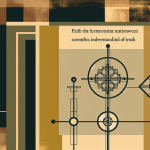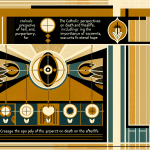The Significance of Vatican City: A Unique Bastion of Faith and History
Vatican City, the world’s smallest independent state, holds a profound significance that extends far beyond its geographical size. Nestled within the city of Rome, Italy, this sovereign entity serves as the spiritual and administrative center of the Roman Catholic Church. Its rich history, cultural treasures, and political influence have made Vatican City a beacon of faith, art, and diplomacy. In this blog post, we will explore the multifaceted significance of Vatican City, delving into its religious, cultural, political, and architectural importance.
A Spiritual Center of the Catholic Church
The Papacy and Religious Leadership
At the heart of Vatican City’s significance lies its role as the residence of the Pope, the leader of the Roman Catholic Church. As the spiritual leader to over a billion Catholics worldwide, the Pope’s influence extends beyond religious realms into social and political issues. Vatican City is where the Pope conducts masses, delivers addresses, and shapes the doctrine that guides Catholic beliefs. The significance of Vatican City as a spiritual leader emphasizes the impact of faith on global societies and personal lives.
The Role of St. Peter’s Basilica
St. Peter’s Basilica, one of Christianity’s holiest sites, is an architectural marvel and a pilgrimage destination. Believed to be built over the tomb of Saint Peter, one of Christ’s apostles, the basilica serves as a symbol of the Catholic Church’s enduring legacy. Pilgrims from around the world flock to Vatican City to experience its spiritual atmosphere, attend services, and participate in various religious events, particularly during Easter and Christmas. The significance of St. Peter’s Basilica within Vatican City solidifies its position as a foremost center of worship and devotion.
A Treasure Trove of Art and Culture
The Vatican Museums
Vatican City is synonymous with world-class art and culture. The Vatican Museums, a collection of art and historical artifacts, house some of the most significant works in human history. Visitors can explore ancient sculptures, Renaissance masterpieces, and contemporary art. Highlights include the Sistine Chapel, adorned with Michelangelo’s iconic frescoes, particularly “The Last Judgment” and the stunning ceiling that depicts scenes from Genesis.
The significance of the Vatican Museums cannot be overstated, as they preserve an unparalleled heritage that continues to inspire countless artists, historians, and visitors. They are a testament to the Church’s patronage of the arts and its influence on Western civilization.
The Importance of Preservation
Vatican City plays a crucial role in the preservation of art and culture. Many artworks housed within its walls represent centuries of heritage that the Church has worked to protect amid socio-political upheavals throughout history. The significance of Vatican City in this context is its commitment to preserving not just Catholic art but also the broader scope of human creativity, making it a pivotal player in global cultural heritage.
Political Significance on the Global Stage
Vatican City as a Sovereign Nation
Despite being the smallest independent state, Vatican City wields considerable influence in international relations. The Holy See, which represents the governance of Vatican City, is a recognized sovereign entity with diplomatic relations with over 180 countries. This unique status allows the Vatican to engage in dialogue on critical global issues, such as peace, human rights, and social justice.
Interfaith Dialogue and Global Diplomacy
Vatican City’s role as a mediator in international conflicts and its commitment to interfaith dialogue are key aspects of its political significance. The Pope often advocates for peace and understanding among different religions, fostering cooperation and mutual respect. The Vatican’s involvement in global diplomacy underscores its mission to promote moral values and ethical considerations in political discourse.
Architectural Marvel and Urban Planning
St. Peter’s Square
St. Peter’s Square, designed by Gian Lorenzo Bernini in the 17th century, is an architectural wonder that serves as the grand entrance to St. Peter’s Basilica. The square’s elliptical shape and colonnades symbolize the Church’s embrace of the faithful. It is here that significant events take place, from papal addresses to public gatherings.
The significance of St. Peter’s Square lies not only in its beauty but also in its role as a communal space where millions gather to witness history in the making. Whether it’s the Pope’s Christmas Eve mass or a papal announcement, the square holds deep emotional and spiritual resonance for Catholics and visitors alike.
Continued Architectural Influence
The architecture of Vatican City reflects centuries of stylistic evolution, from Early Christian basilicas to Baroque grandeur. The preservation of these structures is a testament to the Vatican’s commitment to maintaining its cultural and historical identity. The architectural significance of Vatican City influences urban planning globally, serving as a model for blending spirituality with civic life.
A Hub of Education and Scholarship
The Vatican Library
The Vatican Library is one of the oldest and most important libraries in the world, housing a vast collection of manuscripts, rare books, and historical documents. It serves as a scholarly resource for researchers, historians, and theologians, making it an essential institution for academic study. The significance of the Vatican Library exemplifies its role in the preservation and dissemination of knowledge throughout history.
The Pontifical Academy of Sciences
Vatican City is also home to the Pontifical Academy of Sciences, which promotes scientific research and dialogue between the Church and the scientific community. This institution encourages collaboration on pressing global challenges, including climate change, healthcare, and sustainable development. The significance of the Vatican in this context lies in its bridging of science and faith, highlighting a harmonious relationship between two seemingly divergent fields.
The Pilgrimage Experience
Spiritual Journey to Vatican City
Vatican City is a pilgrimage destination for millions seeking spiritual renewal and connection with their faith. The journey to St. Peter’s Basilica, participation in papal events, and encounters with the rich history of the Church provide pilgrims with profound experiences. The significance of these pilgrimages underscores the deep spiritual connection many hold with the Pope and the Catholic Church.
Cultural Exchange Through Pilgrimage
The influx of visitors allows for a unique cultural exchange, where diverse backgrounds converge in shared faith experiences. Vatican City thus becomes a microcosm of the global Catholic community, promoting understanding and unity among believers from various countries and cultures.
Conclusion: The Lasting Impact of Vatican City
In summary, the significance of Vatican City is vast and varied, encompassing religious, cultural, political, and architectural dimensions. As the spiritual heart of the Catholic Church and a custodian of rich cultural and artistic heritage, Vatican City continues to hold immense importance in the global landscape. Whether through its role in international diplomacy, its commitment to preserving art and history, or its influence in the realm of education and scholarship, Vatican City remains an unparalleled institution.
As visitors explore the wonders of Vatican City, they encounter not just a destination but a journey through centuries of faith, art, and history. The continued relevance of Vatican City as a center for spiritual guidance and cultural appreciation ensures that it will remain significant for generations to come.




